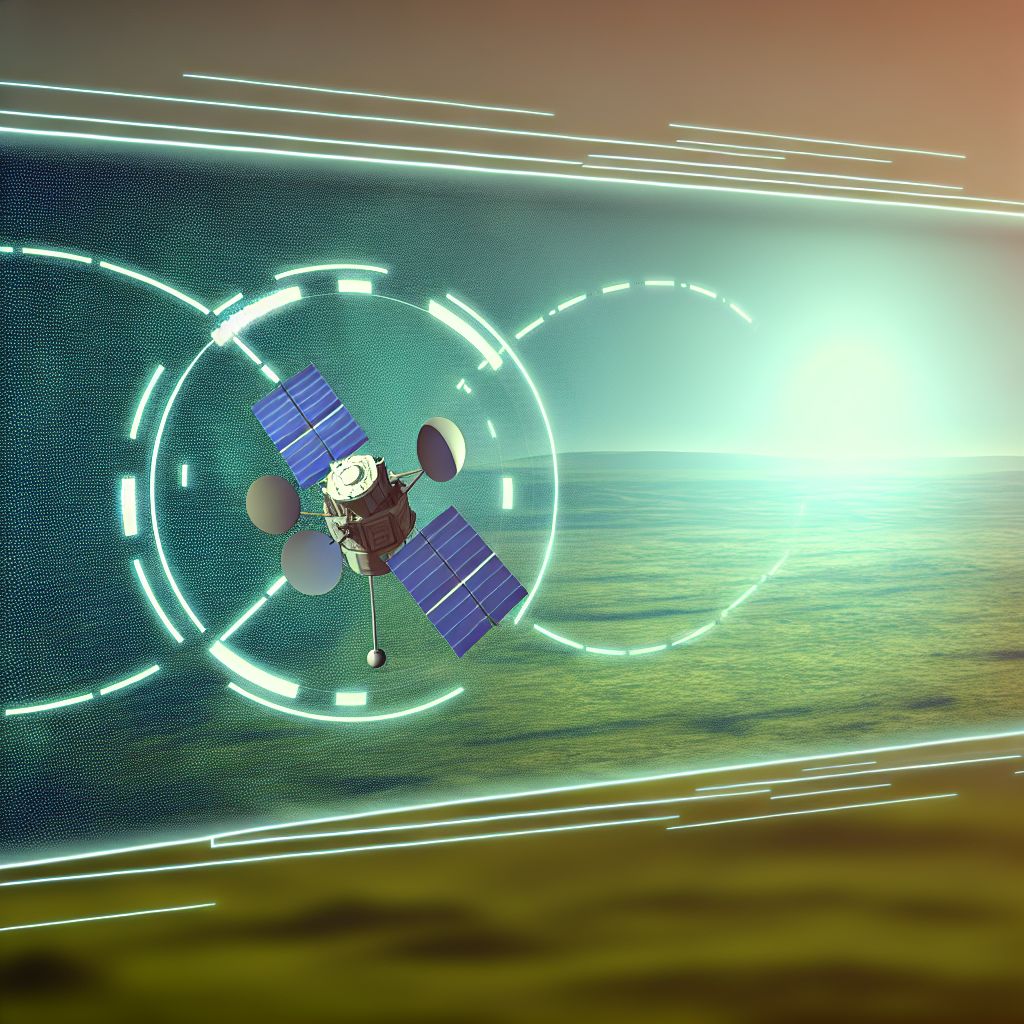Deutsch: Satellitenkommunikation / Español: Comunicación por satélite / Português: Comunicação via satélite / Français: Communication par satellite / Italiano: Comunicazione satellitare
Satellite Communication in the Space industry context refers to the use of artificial satellites to transmit Data, voice, and Video signals across the globe or into space. This technology enables long-Distance communication, bypassing the limitations and infrastructural requirements of terrestrial networks. Satellite communication systems consist of a space segment (satellites in orbit) and a ground segment (ground stations and users' equipment), facilitating a wide range of applications from television broadcasting to internet access, GPS services, and emergency communications.
Description

Satellite communication systems play a crucial role in global telecommunications, offering coverage over large areas, including remote and oceanic regions otherwise unreachable by traditional means. These systems operate by relaying signals from the ground to a satellite and back to another location on Earth or another satellite. They can work in various Frequency bands, such as C-band, Ku-band, and Ka-Band, each with its advantages and applications. The evolution of satellite communication has been marked by significant advancements in satellite technology, ground equipment, and digital communication techniques, enhancing capacity, reducing latency, and improving the reliability of services.
Application Areas
Satellite communication serves a wide Array of applications within the space industry and beyond, including:
- Broadcasting: Distributing television and radio programming to audiences worldwide.
- Telephony and Internet Access: Providing voice and Broadband internet services, especially in underserved or remote areas.
- Navigation and GPS: Offering precise positioning and timing information for various applications, from navigation systems in vehicles to timing in financial transactions.
- Disaster Management and Emergency Response: Ensuring reliable communication links during natural or human-made disasters when terrestrial networks may be unavailable or damaged.
Well-Known Examples
- The Global Positioning System (GPS): A network of satellites providing Critical positioning services globally.
- Geostationary Satellites: Such as those used by DirecTV and DISH Network for direct-to-home television services, positioned to offer continuous coverage to specific areas.
- Low Earth Orbit (LEO) Satellite Constellations: Like SpaceX's Starlink and OneWeb, aiming to provide high-speed internet access globally, especially targeting rural and remote regions.
Treatment and Risks
While satellite communication offers numerous benefits, it also faces challenges and risks:
- Latency: The distance signals must travel to and from satellites can cause delays, particularly noticeable in geostationary orbits.
- Interference and Bandwidth Limitations: Managing the Spectrum efficiently to prevent interference between users and optimizing the limited available bandwidth.
- Space Debris: The increasing number of satellites, especially in LEO constellations, raises concerns about space debris and the potential for collisions.
- Cost: Building, launching, and maintaining satellite communication systems involve significant investments.
Similar Terms or Synonyms
Weblinks
Summary
Satellite communication represents a pivotal technology in the space industry, enabling a wide range of telecommunications services across the globe. It overcomes geographical barriers, extends Connectivity to the most remote areas, and supports critical applications from global broadcasting to emergency response, making it an indispensable part of modern communication Infrastructure.
--
Related Articles to the term 'Satellite Communication' | |
| 'Hacking' | ■■■■■■■■ |
| Hacking in the space industry refers to unauthorized access, Disruption, or manipulation of space-based . . . Read More | |
| 'Latency' | ■■■■■■■ |
| Deutsch: Latenz / Español: Latencia / Português: Latência / Français: Latence / Italiano: LatenzaLatency . . . Read More | |
| 'Networking' | ■■■■■■■ |
| Deutsch: Vernetzung / Español: Redes / Português: Redes / Français: Réseautage / Italiano: NetworkingNetworking . . . Read More | |
| 'Disaster Management' | ■■■■■■ |
| Disaster Management in the space industry context refers to the application of space-based technologies . . . Read More | |
| 'Autonomous System' | ■■■■■■ |
| Autonomous System in the space industry context refers to spacecraft, satellites, or any other space . . . Read More | |
| 'Laser Communication' | ■■■■■■ |
| Laser Communication: Laser communication in the space industry refers to the use of laser beams to transmit . . . Read More | |
| 'Satellites and Spacecraft' | ■■■■■■ |
| Satellites and Spacecraft: Satellites and spacecraft are essential technologies in the space industry, . . . Read More | |
| 'Signal Interference' | ■■■■■■ |
| Signal Interference: Signal interference in the space industry refers to the disruption or Degradation . . . Read More | |
| 'Teleoperation' | ■■■■■■ |
| Teleoperation in the space industry refers to the remote control of spacecraft, robotic systems, or instruments . . . Read More | |
| 'Ground Station' | ■■■■■■ |
| Ground Station in the space industry refers to a terrestrial Facility equipped with antennas, communication . . . Read More | |
